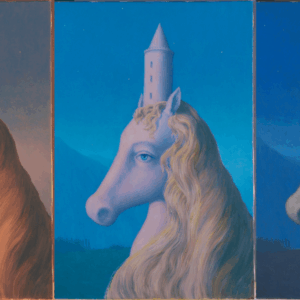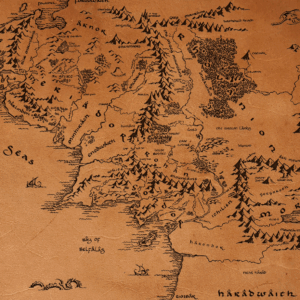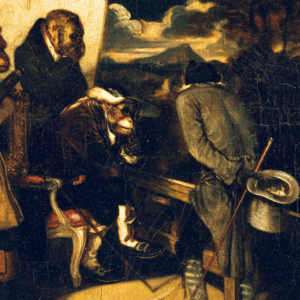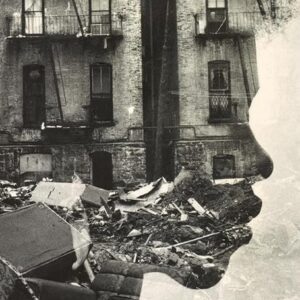
Barry Lopez: An Era of Emergencies is Upon Us and We Cannot Look Away
“I object to the desecration of what is beautiful. I object to society’s complacency.”
The following is from an introduction to American Geography, a selection of images from the permanent collection of photography at the San Francisco Museum of Modern Art.
We’ve lived for generations in America with our promising tomorrows waiting for us just up ahead. Despite world wars and ceaseless warfare, despite backbreaking (for some) economic depressions and recessions, despite a history of slavery and genocide and being plagued by regular flare-ups of malfeasance and corruption in government, despite the oceans of filth and poison that hang menacingly in suspension in our air and water, we continue to believe in deliverance. We believe in the eventual triumph of liberal values—the passage and enforcement of equitable laws, comity in all our daily affairs, affordable education, probity from our politicians—the full embrace of which will allow us finally to dismantle entrenched bigotry and injustice.
As I write these words I’m compelled to say that I see no sign of such a salvation on the horizon. This is not to imply that the situation in the United States is hopeless—even considering the wealth gap, widespread environmental degradation, institutionalized cheating in business, the many biological and economic problems associated with advancing climate breakdown, and the social inequity created by, say, male privilege—but only to suggest that we have been kidding ourselves about there being, just up ahead, a clear path to the other side of all this. Our children and grandchildren, seeing how tentative our response has been to global climate disorder and to whatever else might conceivably be coming along—the sudden collapse of an international financial institution like Deutsche Bank or a pandemic for which there is no immediate cure—have framed already their objections: Why did you not prepare? Why were you so profligate while we still had a chance? Where was your wisdom?
Many of the pictures in American Geography speak to questions about our survival as a species. Some reflect our sense of grief about what has happened. In others you can feel the photographer’s bewilderment at the same time as his or her wonder. For some viewers, these pictures might prompt feelings of anger and condemnation. If you imagine the exhibition as a whole piece of cloth, you could say that the larger question here is, what have we done?
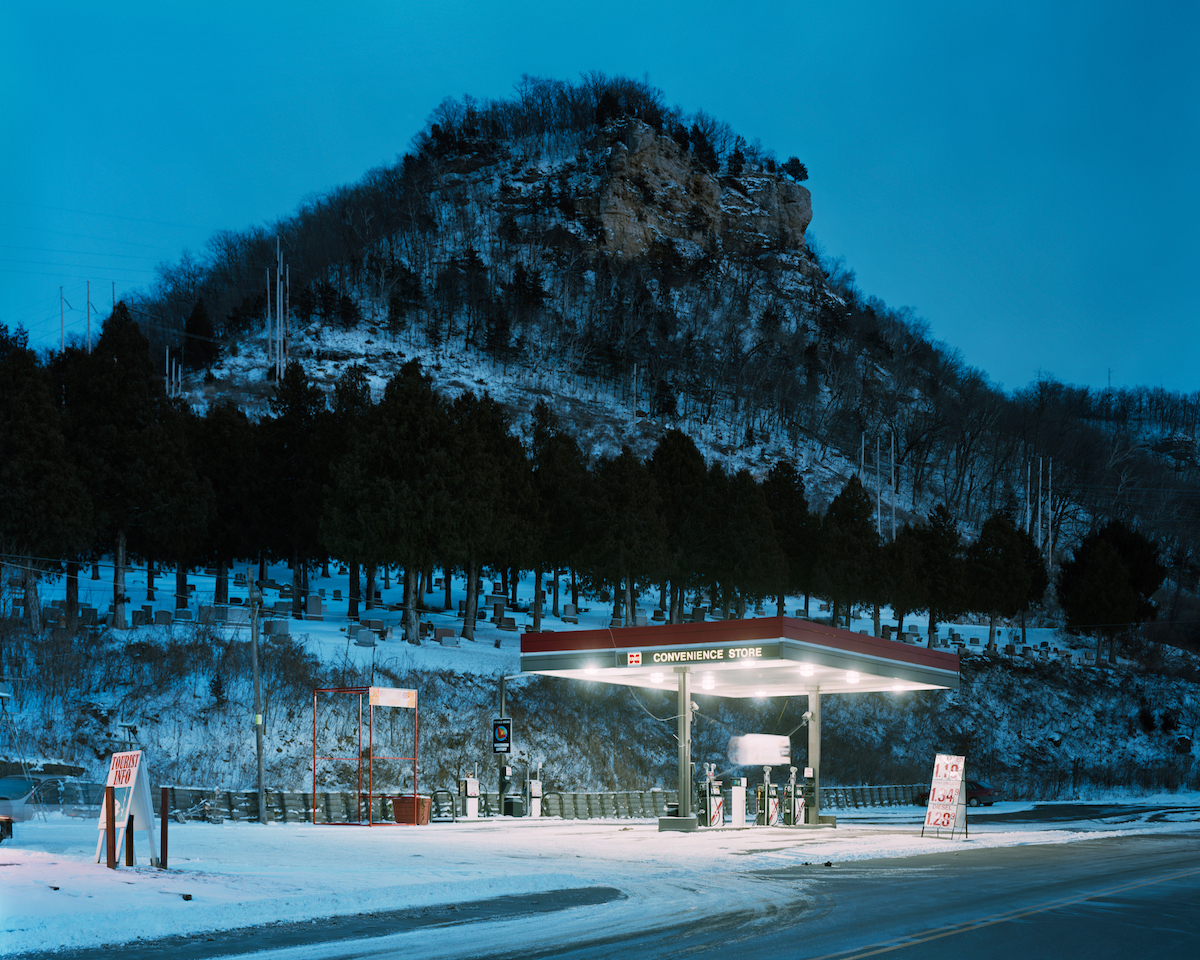 Alec Soth, Cemetery, Fountain City, Wisconsin, 2002, inkjet print, 20 x 24 inches. Collection of the artist. Image copyright © Alec Soth.
Alec Soth, Cemetery, Fountain City, Wisconsin, 2002, inkjet print, 20 x 24 inches. Collection of the artist. Image copyright © Alec Soth.
For me, who began my professional life as a photographer as well as a writer more than fifty years ago, American Geography’s stance is one of direct confrontation. The show dispenses with sentimentality and nostalgia about our once-primal landscapes and is, further, not compromised by iconic photographs of the beautiful. Also, for all of its pictures from the 19th and early 20th centuries, the exhibition is much less about our past than it is about our future. The show persistently questions the value of the “fruits of progress” (or the lack of them) and also the putative ethical foundation for Manifest Destiny. To go on like this, the exhibition suggests—to continue to applaud the individual quest for substantial personal wealth at the expense of others, and to continue to promote the puerile dreams of some to secure positions of social and political advantage over others—would be suicidal.
When Sandra Phillips first invited me to discuss with her the ideas behind this show, I urged her to consider, along with the pictures of cultural imposition she had already located—the boot prints, if you will, of the colonial invader—other, perhaps more welcoming photographs of the enduring biological, geological, and botanical integrity of American landscapes, pictures not marred by clearcuts, toxic settling ponds, transmission towers, contrails, open pit mines, stalled traffic, sprawling feed lots, and the rest of humanity’s infrastructure. These pictures of unmanipulated land, I thought, would contrast sharply with scenes of economic hardship and the heedless marauding that drove the Westward Movement. They would make the ethical debacle documented in many of these photographs more apparent.
I object to the desecration of what is beautiful, to the celebration of what is venal, and to the ethical obtuseness of the king’s adoring enablers. I object to society’s complacency.
But I came around to her point of view. Crudely put, it is that we can no longer afford to carry on in a prolonged era of polite reflection and ineffective resistance. An Era of Emergencies is bearing down on us. We must now consider, for example, how to organize the last industrial extractions of oil, fresh water, natural gas, timber, metallic ores, and fish in order to ensure our own survival; and we must consider, of course, what comes after that. We must reckon with the Sixth Extinction, which will remove, for example, many of our pollinators and one day, probably, many of us. We must invent overnight, figuratively speaking, another kind of civilization, one more cognizant of limits, less greedy, more compassionate, less bigoted, more inclusive, less exploitive.
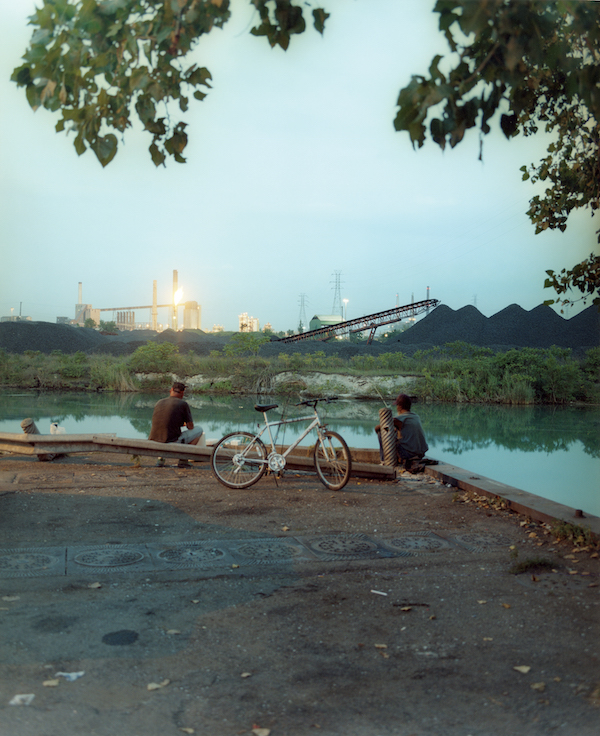 Gregory Halpern, Untitled, from the series A, Detroit, Michigan, 2009, chromogenic print, 16 x 20 inches. Collection of the artist. Image copyright © Gregory Halpern.
Gregory Halpern, Untitled, from the series A, Detroit, Michigan, 2009, chromogenic print, 16 x 20 inches. Collection of the artist. Image copyright © Gregory Halpern.
It is startling to encounter in some of the earlier photographs in American Geography the capacity of women and men, many decades ago, to recognize and capture on film juxtapositions that expose the potential for natural and cultural disaster in what, for so long, we had considered the normal order of western progress.
The courage behind curating American Geography, for me, is the decision by Phillips to address unflinchingly the troubling future, to prompt a reconsideration of what will work for us now, what we will freely abandon, and what we will hold onto at any cost. In contemporary art today, internationally as well as here in America, I have noticed opposition to entertainment for its own sake and a burgeoning desire to create art of consequence, art that does not trifle with us or exploit our grief. More prominent in the arts now than the desire to inform and to illuminate our predicament, or to indict its causes, is the desire to probe it, and to identify previously unconsidered approaches to managing it, to offer metaphors that open out onto workable solutions. With this different kind of orientation it is then possible to regard the dark underbelly of the Industrial Revolution and understand that that radical change in social organization, alongside the sheer scale of industrial production, is now presenting us with a medical bill for all this change, for the treatment of mesothelioma, black lung, pollution cancers, and the rest. To consider that the honey bee and the wild horse have their own integrity and perhaps even their own aspirations, and can no longer be viewed as subjects, willing to participate in the construction of a world built to serve the needs and desires of human beings alone.
 Lucas Foglia, George Chasing Wildfires, Eureka, Nevada, 2012, Chromogenic print, 19 3/8 x 26 inches, San Francisco Museum of Modern Art, Accessions Committee Fund purchase. Image copyright © Lucas Foglia.
Lucas Foglia, George Chasing Wildfires, Eureka, Nevada, 2012, Chromogenic print, 19 3/8 x 26 inches, San Francisco Museum of Modern Art, Accessions Committee Fund purchase. Image copyright © Lucas Foglia.
At the heart of the lifework of many artists I have known is a simple but profound statement: “I object.” I have studied what we have done to the planet and I object. I object to the exploitation of, and the lack of respect for, human laborers. I object to the frantic commercialization of the many realms of daily life, I object to the desecration of what is beautiful, to the celebration of what is venal, and to the ethical obtuseness of the king’s adoring enablers. I object to society’s complacency.
As you browse among and study these pictures, I would ask you not to give in to the temptation to despair, not to retreat into cynicism or to settle into disaffection, but to recognize in these photographs the resilience, determination, and concern for the fate of humanity that these photographers possess. And I would ask you further to consider how integral to American Geography is the idea of an ensemble of work like this. While there is individual genius behind many of these pictures, it is the community of artists, the absence of overbearing individual sentiment, that stands out here.
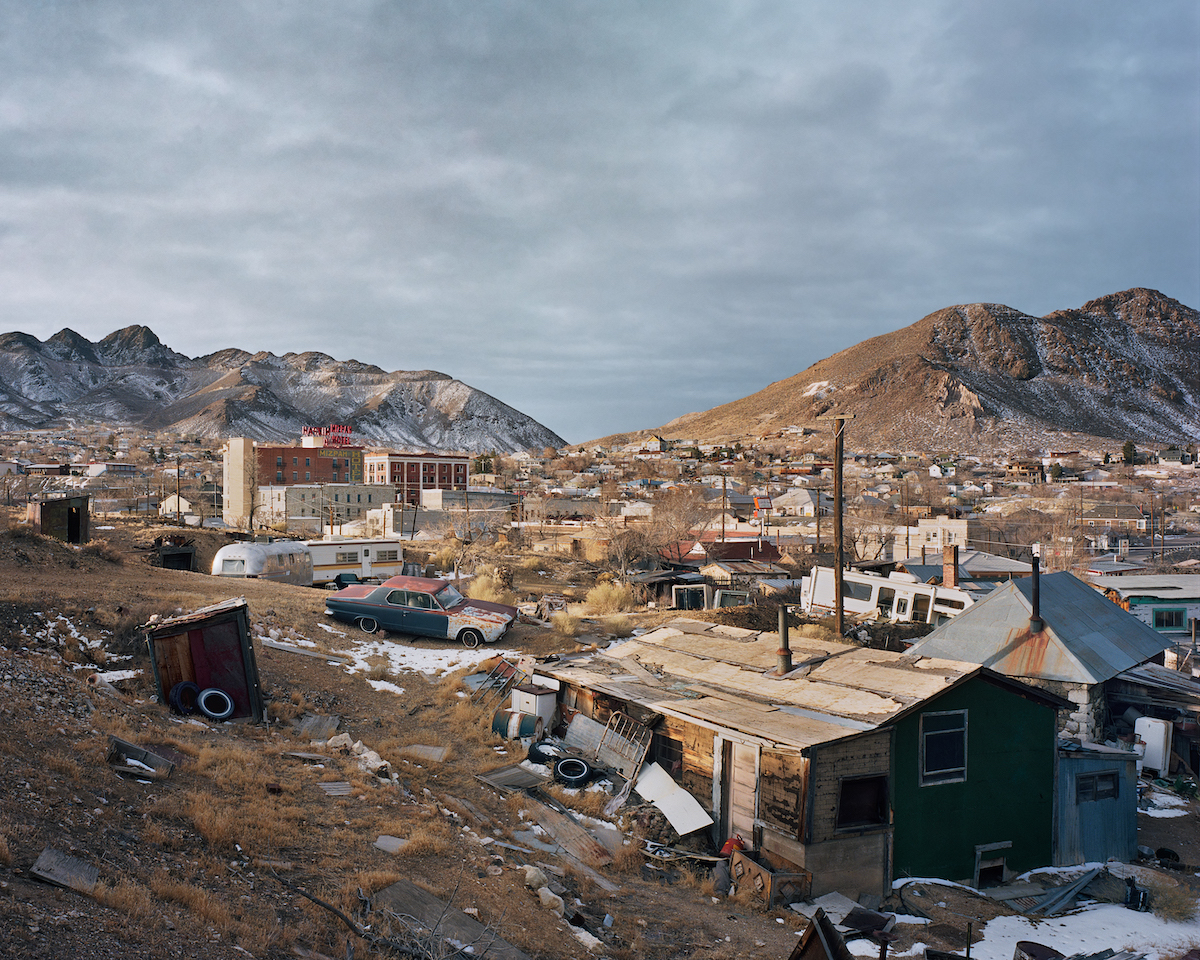 Bryan Schutmaat, Tonopah, Nevada, from the series Grays the Mountain Sends, 2011, inkjet print, 22 x 27 1/2 inches. San Francisco Museum of Modern Art, promised gift of William M. Goodman and Victoria C. Belco in loving memory of Teresa Goodman. Image copyright © Bryan Schutmaat.
Bryan Schutmaat, Tonopah, Nevada, from the series Grays the Mountain Sends, 2011, inkjet print, 22 x 27 1/2 inches. San Francisco Museum of Modern Art, promised gift of William M. Goodman and Victoria C. Belco in loving memory of Teresa Goodman. Image copyright © Bryan Schutmaat.
It was during the Scientific Revolution that Art as a distinct and enduring form of truth-telling, as important for us to consider as the colossal data sets that Science has produced in its own ongoing effort to plot a viable future for humanity, that the indispensability of the arts began to lose its stature. Since then we have come to regard the voice of Science as definitive. Now, some are saying that we appear to be on the verge of another kind of orientation, resituating the arts in a position of authority. We are seeing this in photography, in musical composition, in fiction, in dance and theatre, and in installation and performance art and in painting, as artists make our existential predicament more apparent and point us in the direction of radical social change, for which, frighteningly, we have made virtually no preparation.
The photographs in American Geography are not an indictment of human enterprise, nor are they a critique of industrialization or a condescending assessment of humanity’s failures. If anything, they reveal the artists’ sense of implication in whatever they confront with the camera, and in some ways the grief that they share with the viewer. In American Geography there is no one to blame. The exhibition is an invitation, instead, to reimagine our future, to identify a different road than the one that the prophets of technological innovation, or global climate change itself, is offering us.
It’s the road to our survival.
_______________________________
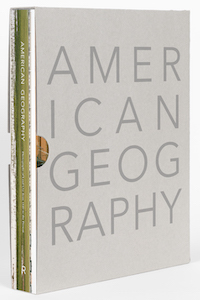
Text and photos from American Geography, which is forthcoming from Radius Books, Santa Fe, 2021.
Barry Lopez
Barry Lopez is the author of six works of nonfiction and eight works of fiction, including Arctic Dreams, which received a National Book Award. His writing appears regularly in Harper's, The Paris Review, DoubleTake, and The Georgia Review. He is the recipient of a National Book Award, an Award in Literature from the American Academy of Arts and Letters, a Guggenheim Fellowship, and other honors. He lives in western Oregon.









